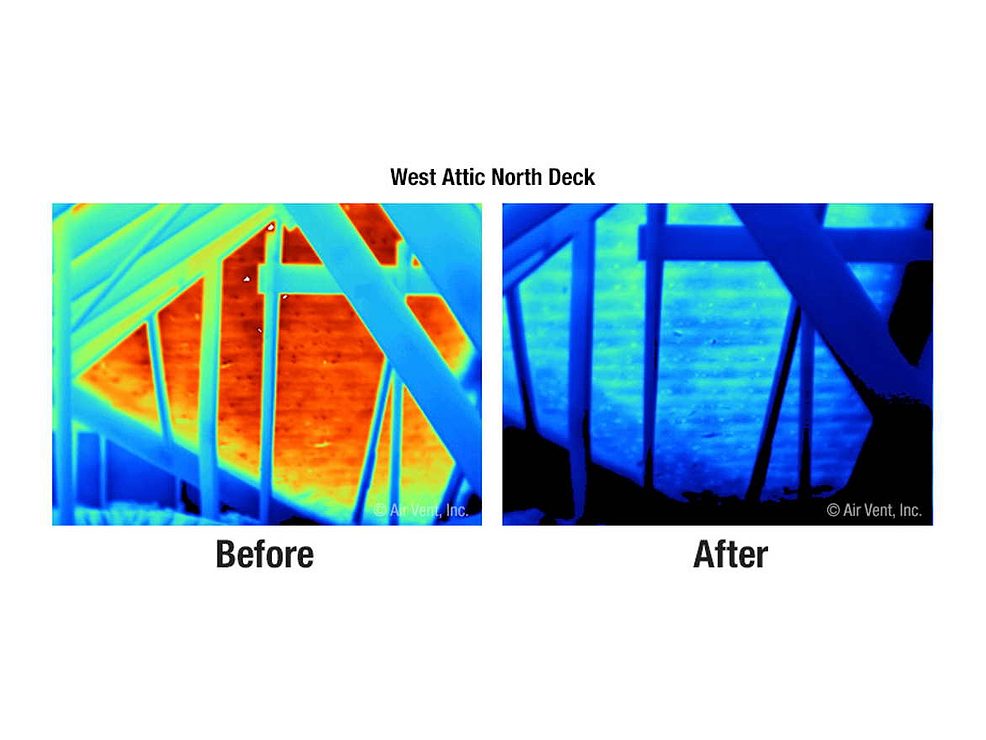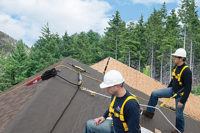
The Occupational Safety and Health Administration (OSHA) has issued a new fall protection directive that will change the way roofing contractors handle residential construction projects.
OSHA defines fall protection requirements for residential construction activities in 29 CFR 1926.501 (b)(13). OSHA defines residential construction as work that meets both of the following:
• The primary use of the structure must be as a home.
• The structure must be built using traditional wood frame construction materials and methods.
In June 1999, OSHA issued Directive Number STD 03-00-001. This directive allowed residential construction workers to use alternative procedures/methods (slide guards, safety monitoring systems, etc.) to protect them from fall hazards, essentially exempting them from the conventional fall protection requirements in 29 CFR 1926.501 (b)(13).
On Dec. 16, 2010, OSHA issued Directive Number STD 03-11-002. This new Directive rescinds (cancels) Directive number STD 03-00-001. Beginning on June 16, 2011, all residential construction employers must comply with 29 CFR 1926.501(b)(13). The requirements of 29 CFR 1926.501(b)(13) are as follows:
“Residential construction.” Each employee engaged in residential construction activities 6 feet (1.8 m) or more above lower levels shall be protected by guardrail systems, safety net system, or personal fall arrest system unless another provision in paragraph (b) of this section provides for an alternative fall protection measure. Exception: When the employer can demonstrate that it is infeasible or creates a greater hazard to use these systems, the employer shall develop and implement a fall protection plan which meets the requirements of paragraph (k) of 1926.502.
Note: There is a presumption that it is feasible and will not create a greater hazard to implement at least one of the above-listed fall protection systems. Accordingly, the employer has the burden of establishing that it is appropriate to implement a fall protection plan which complies with 1926.502(k) for a particular workplace situation, in lieu of implementing any of those systems.
Any employer who is not in compliance with 29 CFR 1926.501(b)(13) by June 16, 2011 will be cited by OSHA. The full text of this new Directive can be found at:www.osha.gov/doc/residential_fall_protection.html.
Ensuring Compliance
Most fall protection equipment manufacturers offer complete roofers’ kits that include everything you need to be compliant. These kits usually contain a full body harness, a length of rope and a rope grab, and a roof anchor.Full-body harnesses are available in different sizes. It’s important to select a harness that fits the worker properly. You want the harness to be snug, but not too tight, and have enough adjustment to accommodate multiple layers of clothing as the weather changes. You will also have a choice of D-ring configurations, leg strap connections, and chest straps. For most residential roofing work, all you will need is a harness with a back D-ring for attachment of your fall arrest system. However, models are available with hip D-rings for work positioning/travel restriction applications and chest D-rings for personnel riding applications. Choosing between the various leg strap connections and chest strap options on a harness all comes down to worker preferences. Most people prefer tongue buckle style leg straps and vest style (H style) harnesses for ease of donning and doffing.
A rope and rope grab are common connecting elements used in residential construction. Rope grabs provide freedom of movement around the work site and protection against falls from the roof. Virtually any length of rope is available for purchase, but common lengths are 25 feet and 50 feet. You want to use the shortest length of rope possible for your application. There are two types of rope grab devices on the market - manual rope grabs and trailing rope grabs. Manual rope grabs are always in a locked position in the rope. They require the user to manually position the rope grab on the rope as they moves around the work site. Trailing rope grabs will automatically move along the rope (in one direction) as a user moves around the work site. While trailing rope grabs are more convenient to use, they do cost more than a manual rope grab.
There are many types of roof anchors available on the market. Roof anchor selection is dependent upon the type of work being performed and the type of roof structure available. Permanent roof anchors are most commonly used on new construction or when the entire roof structure is being replaced. The advantage of a permanent type of roof anchor is that it remains accessible for future maintenance of the roof after the initial project is complete. Temporary roof anchors can be installed and removed quickly and easily multiple times and are available for a wide array of roof structure types. Temporary roof anchors are commonly used for roof repair or maintenance activities where a preexisting permanent roof anchor doesn’t exist.
To help you determine what you need to be in compliance with this new OSHA directive, just remember you’re ABC’s: A = Anchorage (such as a roof anchor), B = Body support (full body harness), C = Connector (rope and rope grab). Complete kits are available for simplified product selection or each component element can be ordered separately to ensure the perfect kit for your unique application.




